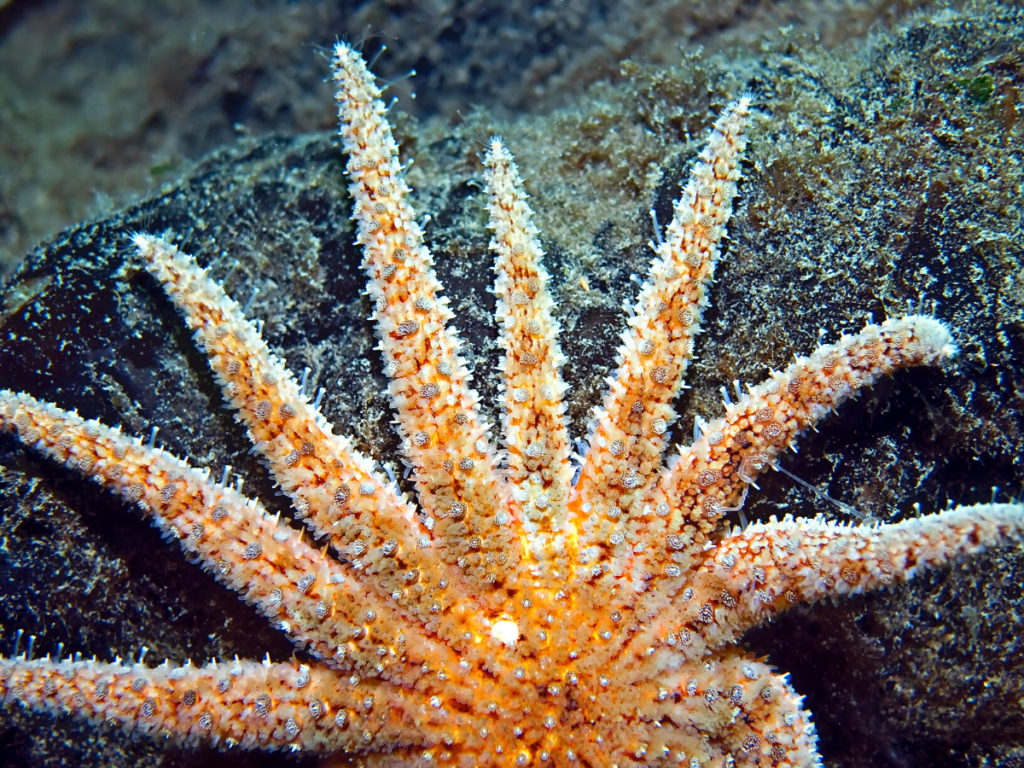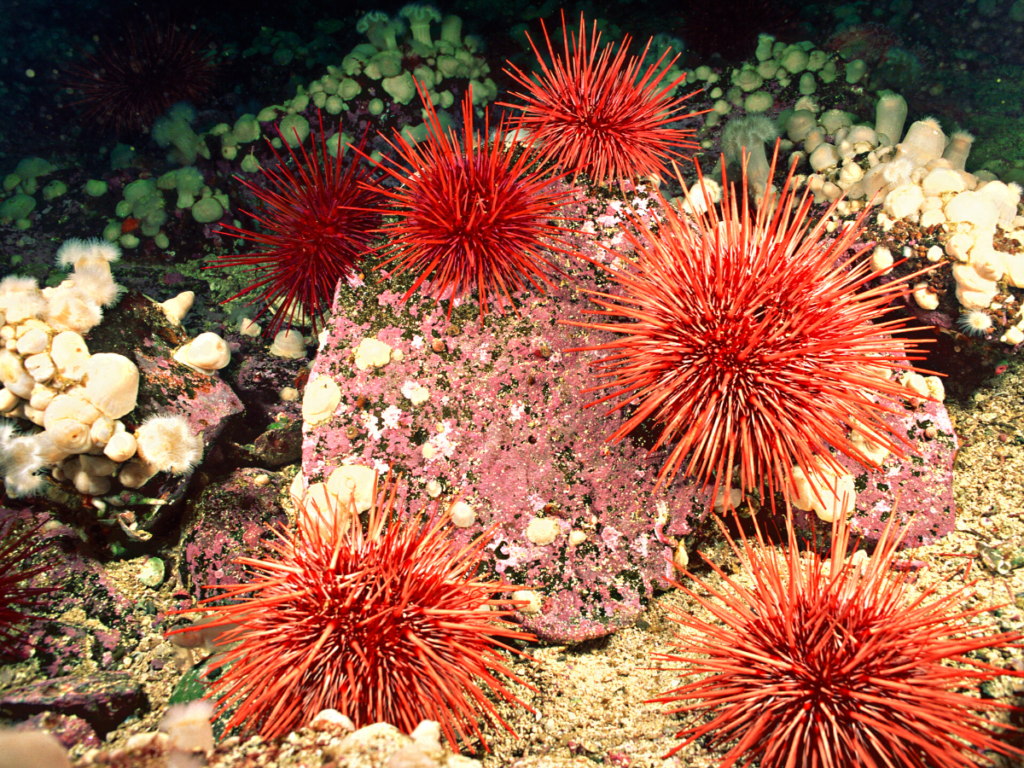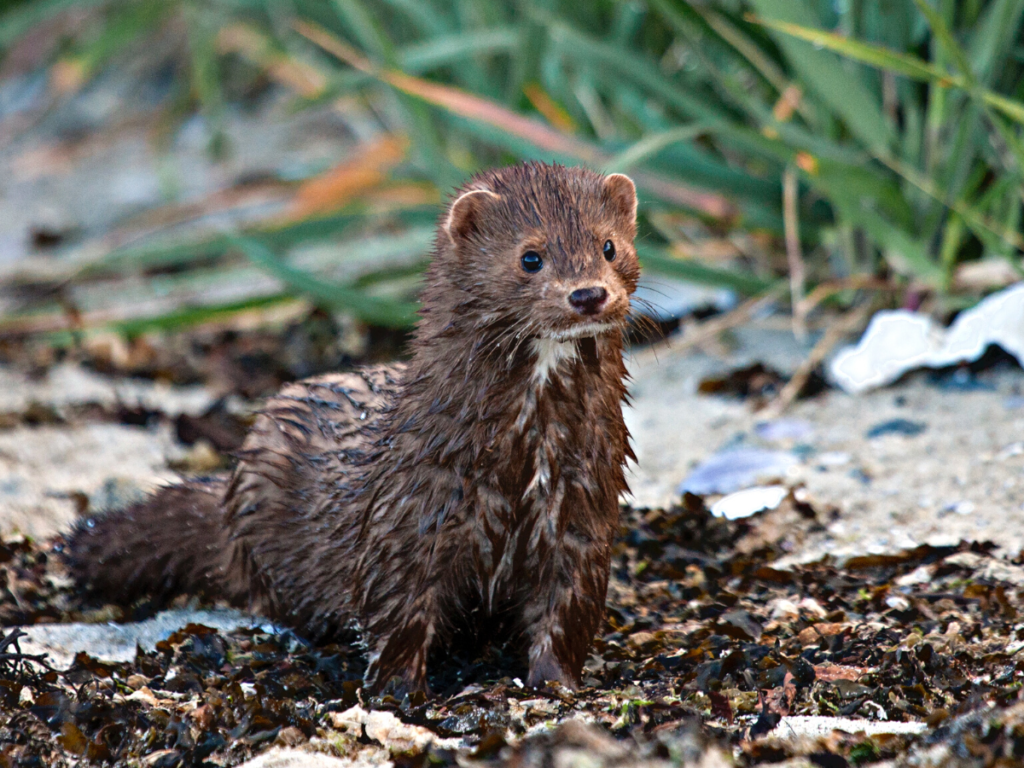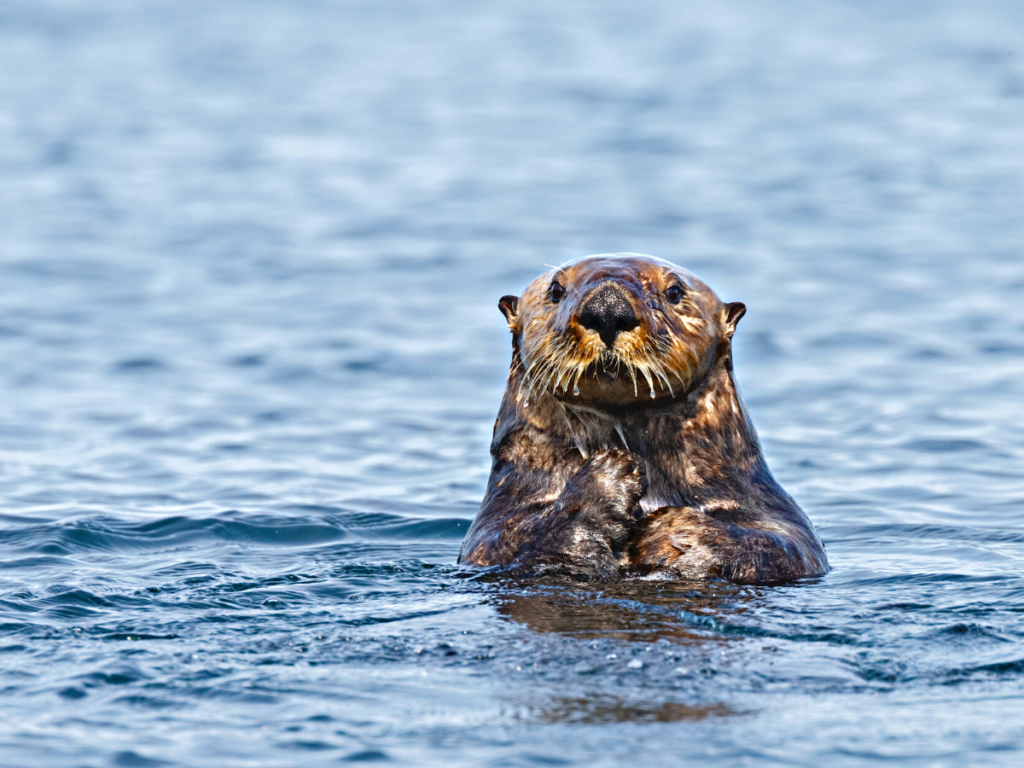Alaska’s Intertidal Life: Simply Amazing Ketchikan, Alaska: Intertidal Zone
What intertidal can we see on our Ketchikan wildlife tour?
Alaska’s intertidal life refers to the area of the ecosystems that ebbs and flows with the massive tides that incorporate the region. Alaska’s shoreline makes up over 34,000 miles, doubling the shoreline in all of the lower 48 combined. With this much area for life to flourish, let us dive into what critters thrive in these environments. Sea stars, sea cucumbers, urchins, bull kelp, rockweed, mink, otters and seals call this arena home.
What wildlife can we see on our Ketchikan whale watching and wildlife tour?
Alaska Starfish: Spiny Sea Star and Sunflower Sea Star
From high tide to low tide there’s a massive amount of water pushing and pulling nutrients from the rocky shorelines off the Alaskan coast. Here is where you’ll see: Sea stars hanging from the rocks along with barnacles, sea cucumbers, mussels and urchins. Spiny sea stars and sunflower sea stars in all shapes and colors thrive in these conditions. The spiny sea star painted in vibrant orange, pinks and purples litter the rock, the rocks working areas rich with mussels. Spiny sea stars have five or more legs and over 10,000 powerful suction cups used for prying open clams and mussels.
sunflower sea stars
Sunflower sea stars are one of the fastest moving sea stars with the ability to cover five to ten feet in a minute. Not only is that impressive, but it’s also the largest and heaviest sea star in the North Pacific. This may not seem like real speed to the untrained eye, but this adaptation helps them outpace sea urchins, sea cucumbers and snails they feed on. Sunflower sea stars have between 16 to 24 limbs and can grow up to three feet across. They have an innate ability to dig up clams from mud and are an integral part of the Alaska intertidal zone.


SEA CUCUMBERS
Sea cucumbers range the entirety of the Pacific coast from Mexico to Alaska. With that being said, Southeast Alaska and the surrounding waters of Ketchikan hold the highest concentrations. Sea cucumbers prefer to live in waters that have a bottom makeup of shale and gravel and avoid muddy areas. This makes them a perfect species for the intertidal zones. In Southeast Alaska and other regions they are responsible for a huge commercial fishery taken year in and year out. Many divers spend fall and winters harvesting them for commercial sale.
Sea Urchins
Red Sea urchins range throughout the coastal waters from Alaska down to Baja California. In Southeast Alaska they prefer rocky shorelines with the largest concentrations in Ketchikan waters. They can inhabit intertidal depths up to 250 feet all the while feeding on microorganisms and kelp. For these reasons they absolutely love the intertidal zone. Sea stars and otters make up their biggest predators along with humans who use the roe or uni as edible delicacies. Commercial fisheries harvest red sea urchins in Southeast Alaska and typically ship them to Japan as fresh uni.

Alaska Kelp Forest: Bull Kelp and Rockweed
While there are hundreds of species of seaweed in Alaska, for the sake of the intertidal zone we’re going to focus on bull kelp and rockweed and what characteristics make it such a vital part of the Alaskan marine ecosystem.
Kelp Forests
First and foremost, kelp forests resemble forests on land. Its rootlike structures attach to large rocks anchoring them to the ocean floor, while a vertical hollow stipe imitates a tree trunk leading up to a gas-filled bulb where the fronds grow and float on the surface of the ocean. This canopy in a vast kelp forest absorbs sunlight and provides the ability for bull kelp to grow up to two feet a day! Kelp are an integral part of the ecosystem and home to thousands of species including fish birds, otters and urchins. Not only are kelp forests important for marine species, but they double as a floating structure that aids in erosion as they create a barrier between the coastline and violent waves. Bull kelp in particular has garnered heightened attention in recent years as a superfood for human consumption. This has led to an increase in bull kelp harvesting and farming through Southeast Alaska.
Bull kelp draws the most similarities to the ocean version of the Tongass Rainforest, and its towering old growth forests. Well if that’s so, then rockweed might as well be the pasture lands built intertidal zone. Rockweed can be explained as an abundant intertidal species, yellow-brown in color with distinctive air bladders and blades that dance along the rocks. They only grow up to 20 inches tall and dominate the high to low intertidal rock formations making up the intertidal zone. Rockweed intertidal habitats maintain species such as grazing snails, sea urchins, clams and worms.

MINK
Mink are often seen on Ketchikan whale watching and wildlife tours when you’re cruising the shorelines by boat. Mink absolutely love the intertidal zone, especially at a low tide because of the opportunity to feed on various clams, mussels, crabs and fish. They share the same family as the otter and can live up to ten years, while weighing in anywhere from 3-5lbs. Adorable as they are, easily confused for a pet ferret as they look very similar. Mink are often seen scampering and skipping about the intertidal zone flipping over rocks in search of food.
SEA OTTERS
Sea otters are another adorable creature that loves playing, feeding and living in the intertidal zones of Alaska. Another member of the weasel family, otters are playful creatures that like to romp and tumble with each other. During our Ketchikan wildlife and eco tour excursions, otters can be seen floating on the water’s surface on their backs. Often otters may even grab a hold of bull kelp while they sleep so they don’t float away from the safety of the kelp forests. Sea otters love to eat the shellfish present in the intertidal zones, but also have the ability to dive up to 250 feet when foraging. These multi-faceted and opportunistic feeders even use tools such as rocks to break open various shellfish.

Ketchikan, Alaska: Wildlife Viewing Tour Fun Facts Intertidal Zone
1. Alaska’s shoreline and intertidal regions cover more than 34,000 miles! More than the entirety of the lower 48 states combined.
2. Spiny sea stars have over 10,000 powerful suction cups used to pry open clams and mussels.
3. Sunflower sea stars are the largest and heaviest sea stars in the North Pacific, also being one of the fastest sea stars. What an athlete!
4. Southeast Alaska has one of the highest densities of sea cucumbers in the world.
5. Sea urchins can inhabit waters up to 250 feet deep.
6. Bull kelp forests provide a lust canopy for many marine species. Bull kelp can also grow up to 2 feet per day.
7. Otters and Mink can use rocks as tools to smash open various clams and mussels.
